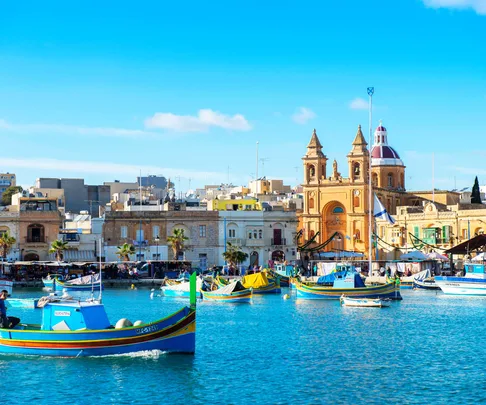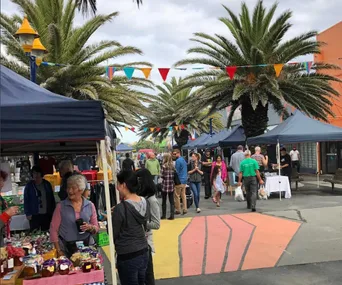The woman at the check-in counter is terse and unsmiling. She’s clearly about to deliver bad news.
“I’m sorry, but because of the floods in Milan your flight is cancelled,” she says, refusing to make eye-contact with either of us. “But we can offer you tickets to Malta instead.”
Us: “Where?” I vaguely remember learning about the tiny Mediterranean country in fifth form geography, but time and indifference had wiped it from my mental slate.
In fact, the sum total of our knowledge of Malta consisted of the fact actor Oliver Reed died there and it’s where they filmed Gladiator, Troy and other films involving men in togas.
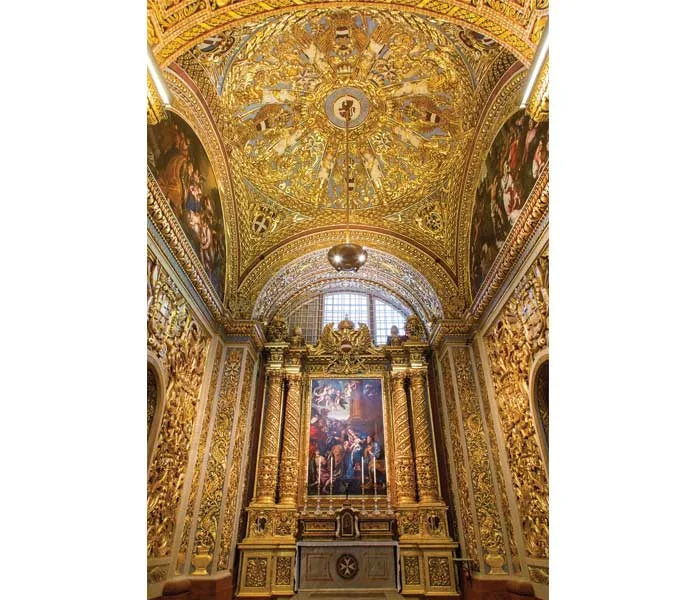
We were apparently not alone in our ignorance: on our return to New Zealand, friends asked if Malta was somewhere in Africa, if it was an island and if we needed inoculations. But having spent a week in the tiny Mediterranean speck, I can confidently say the EU’s smallest state is also one of its best.
That’s if you make it from the airport in one piece. Malta has one of the worst driving records in Europe and the absence of traffic lights, drivers determined to break the land-speed record and potholes you could fish in, makes for one hairy ride.
But if your taxi overtakes on a blind corner, or the bus driver spends the entire journey chatting to his mate, barely glancing at the road, you should do as the locals do: shrug and get over it. As one man told me: “Here we drive on the right, on the left and on the footpath. But we always get there in the end”.

He’s right and besides, the three small islands that comprise Malta contain so many treasures it’s easy to overlook the driving issue. Because Malta is one of the most historically significant places on earth.
There are five World Heritage sites featuring some of the oldest structures in the world, including 5000-year-old temples which rub up against immense 16th century fortifications, megalithic fortresses and grand stone palaces. Here history doesn’t just whisper from the shadows; it yells from the rooftops.
And what a history it is: the list of those who’ve invaded and ruled this tiny archipelago over the past 7000 years reads like a who’s who of the ancient world. As far back as 7000 BC, the Greeks showed up and helped themselves to large chunks of land. They were followed by the Romans, Arabs, Sicilians, the Knights of St John, the French, Turks and even the British.
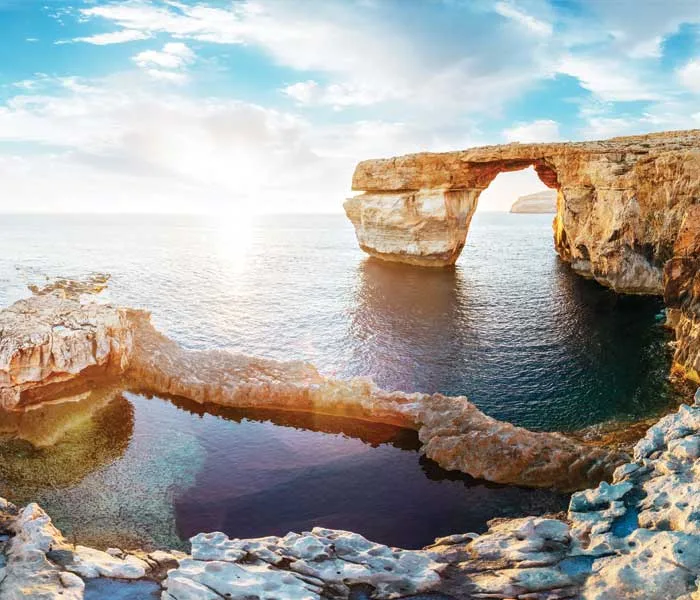
So it’s not surprising that Malta, the smaller island of Gozo and the even tinier one of Comino are like sponges, having absorbed characteristics from all those who have gone before.
The Italians, for example, bequeathed pasta and wine, there are architectural flights of fancy and spice from the Phoenicians and almond and olive trees from the Greeks and Romans. Dates and sugar cane came courtesy of the Arabs, while the last rulers, the British, introduced red telephone boxes, right-hand driving and a penchant for scones and tea.
We begin our Maltese adventure in Valletta, the capital of Malta. At 600m x 1000m, it’s the EU’s smallest capital, a compact city filled with charming cobbled lanes and hole-in-the wall cafés.
Dominating the proceedings is St John’s Co-Cathedral, a ridiculously ornate behemoth that would put most European cathedrals to shame. The proscenium arches, marble inlay tombstones, and manically ornamented everything are an incredible testament to the Knights of St John’s endless attempts to keep up with the Medicis. And if that’s not enough, there are two paintings by Caravaggio.
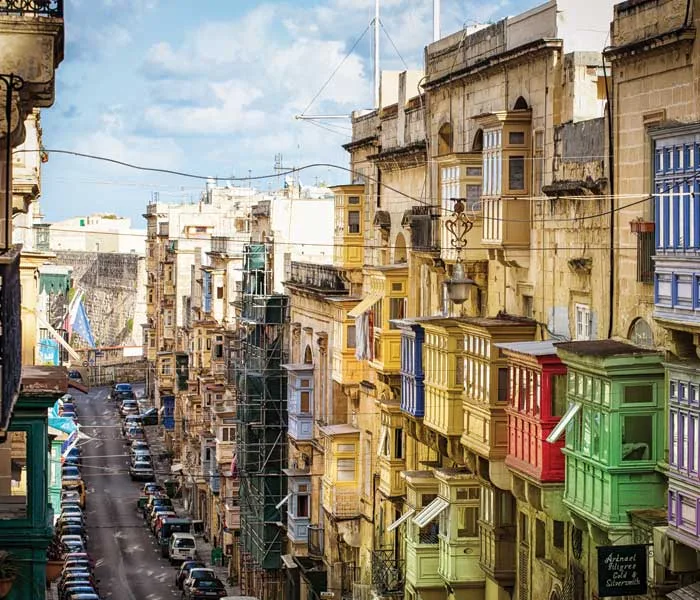
The mercurial Italian apparently spent 14 months on the island before impregnating a local organ-player and legging it, leaving in his wake the astonishing realist masterpiece, The Beheading of St John the Baptist.
Almost as impressive is the 16th century Grand Master’s Palace, once home to the Knights of St John and now the seat of Malta’s parliament and the official residence of the Maltese president.
But a girl can’t live on architecture and art alone so we take ourselves to the Upper Barrakka Gardens, a shaded colonnaded garden which provides surely the best view of Malta’s Grand Harbour. Given this view, and the amount of historic and architectural bling, it’s no surprise that Malta is the go-to destination for film makers.
Our guide tells us these sun-blushed islands produce more films per head of population each year than Los Angeles. No wonder the locals are so proud movies such as Gladiator, Troy, Midnight Express and The League of Extraordinary Gentlemen were filmed here.
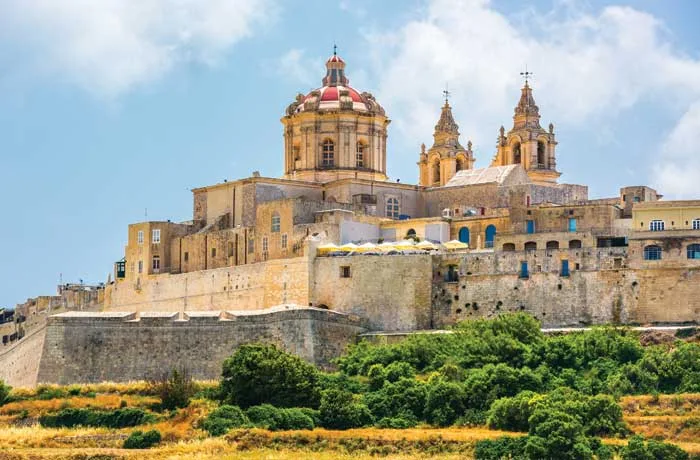
Indeed, one of the most famous actors to film here was the late Oliver Reed, so it’s fitting that we raise a glass of the excellent local brew, Cisk Beer, to him at a tiny back-street bar known simply as The Pub. This is where the infamous Reed enjoyed his last ever drop of alcohol and the walls are, accordingly, papered with photos and mementos of him.
By day three we’re ready to brave the Maltese traffic again, so we jump on one of the prehistoric public buses for the 45-minute journey to the island’s former capital, the medieval city of Mdina. This is, without a doubt, historic Malta at her most photogenic.
We lose the best part of a day exploring the charming cobbled alleys that snake around Baroque palazzos and ornately decorated churches.
The only problem with such historic loveliness is that every other tourist on the island wants to see it too; but do as we did, and escape the crush by walking the tree-lined streets to Rabat, the tiny town immediately to the south of Mdina. Here lie some of the most important Christian sites in this deeply Catholic nation, including St Paul’s Church and Grotto.

Legend has it the saint was shipwrecked off the Maltese coast in AD60 and spent some time living here. Across the square, St Paul’s Catacombs are also worth a visit, if only to escape the heat of the day. There’s not a lot to see in the labyrinth of rock-cut tombs but it’s still fun to explore.
You can’t come to Malta and not catch the ferry to Gozo, one of three tiny limestone dots that make up the Maltese archipelago.
As far north as you can go without bumping into Sicily, Gozo was said to be home to the sea nymph Calypso who kept Odysseus as a prisoner of love for seven years. It’s only 43sq km, which means you can drive it in half an hour (or 10 minutes, if you’re a local).
We hire cycles and ride out to the island’s most historic site, the Ggantija Temples. Pre-dating the Egyptian pyramids and Stonehenge by some 1000 years, the Giant’s Temples are said to be the world’s oldest free-standing buildings.
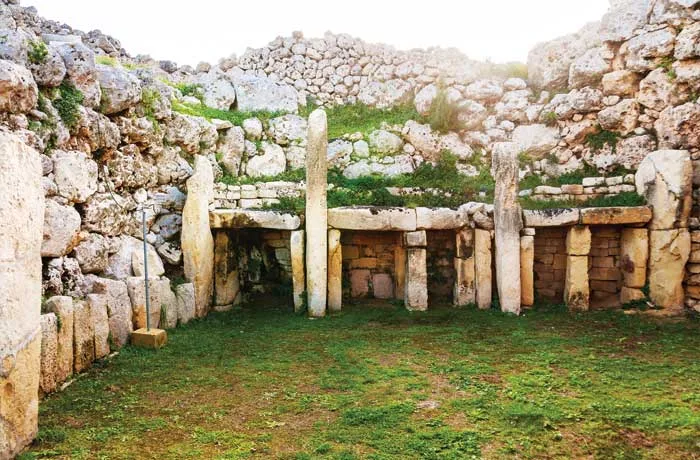
Built around 3600BC, possibly as the site of a fertility cult, archaeologists believe the numerous rotund female figurines found among these soft limestone structures are connected to that cult. Local legend has it that a giantess built these temples and used them as places of worship.
History is one thing you can’t get away from in Gozo; religion is another. Everywhere you turn you will see religious references – from statues of the Virgin Mary in front of the supermarket to houses with names such as The Assumption, Santa Maria and Bethlehem. Which could explain the ubiquitous domed churches: 50 for a population of just under 30,000.
Gozo is big enough to be interesting but small enough to be easy, and once you’ve visited the main historic sites, there’s not much else to do here but eat, drink and relax.
We eat fresh fish at cafés with the Mediterranean Sea lapping at our feet, take leisurely walks along the limestone cliffs and prop up the local wine industry (not bad, as it goes). It’s the perfect end to our week in one of Europe’s best kept secrets.
Words: Sharon Stephenson
For more from NEXT, follow us on Facebook and Instagram here.
